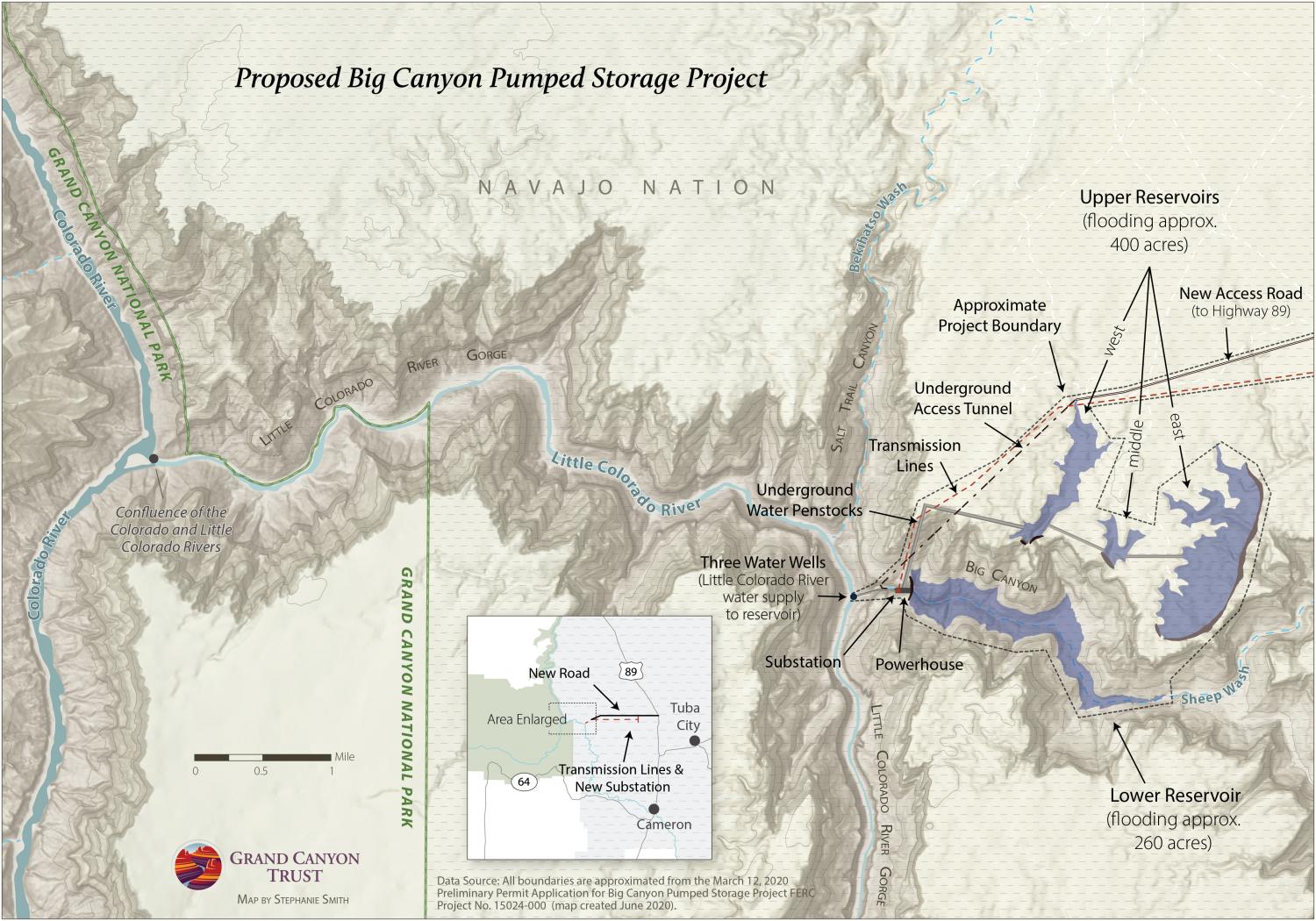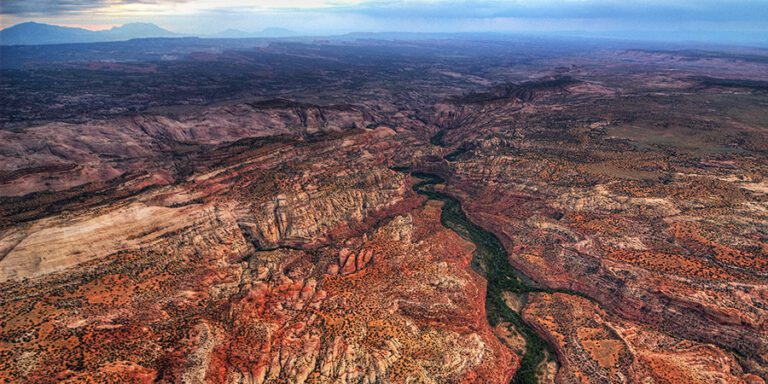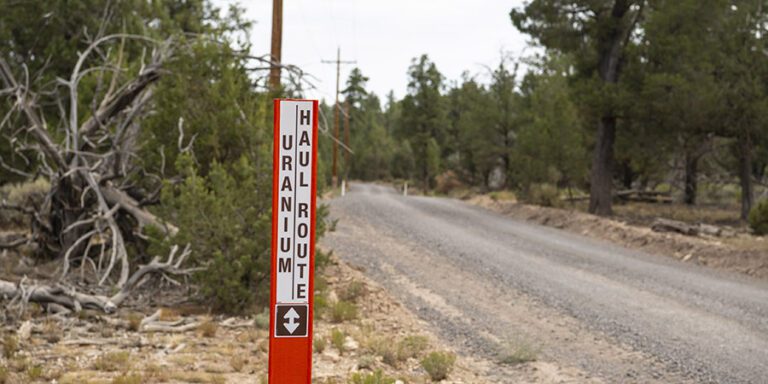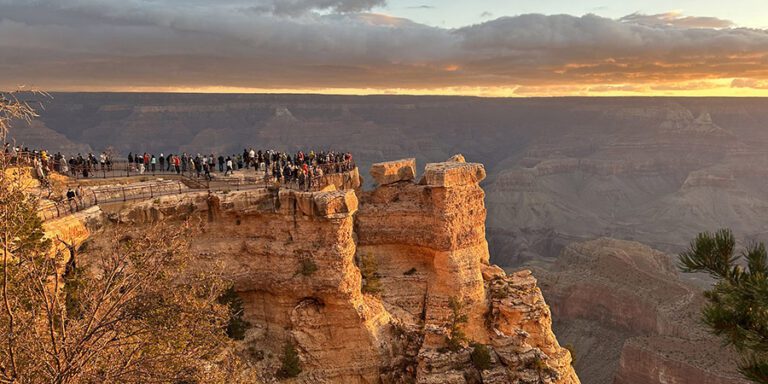
A developer continues to push a third dam proposal on the Navajo Nation near the Little Colorado River.
Long-term efforts to protect the Little Colorado River from development saw an exciting victory this week. The Federal Energy Regulatory Commission announced the final permit surrender for two proposed dams on the Little Colorado River. The dams had been proposed near the confluence of the Colorado River and the Little Colorado River in the Grand Canyon.
The move comes after years of advocacy by Save the Confluence, a grassroots group of Navajo families who live and raise livestock in the area. Multiple tribes, including the Navajo, Hopi, and Hualapai also strongly condemned the projects.
Developer asks to cancel dam permits near the Little Colorado River
Faced with tribal opposition, the developer asked to cancel its permits for two out of three proposed dams in the area back in July 2021. However, the developer continues to pursue a proposed hydroelectric project in nearby Big Canyon, on Navajo Nation land.
READ MORE:
Notice of surrender of the Little Colorado River Dam project permit
Notice of surrender of the Salt Trail Canyon Dam project permit
The Salt Trail Canyon and Little Colorado River dam projects were first proposed in 2019 as hydroelectric generating projects along the Little Colorado River. The Little Colorado River is a significant tributary to the Colorado River in the Grand Canyon and an area of profound cultural importance to many Native American tribes.
The developer, Pumped Hydro Storage LLC, requested that the two preliminary permits be canceled after strong opposition from local tribal community members, the Navajo Nation, the Hopi Tribe, and the Hualapai Tribe, and conservation organizations including the Grand Canyon Trust.
More than a year later, the Federal Energy Regulatory Commission has finally closed the door on two of three dam proposals threatening the Little Colorado River.
The Salt Trail Canyon and Little Colorado River dam proposals would have dammed sections of the Little Colorado River. They would have harmed both its cultural integrity and the ecological well-being of threatened humpback chub fish populations.
Protecting the Little Colorado River from unwanted development
Despite this positive news, threats to the Little Colorado River and the confluence continue. Only two years after the Escalade tram proposal was voted down by the Navajo Nation Council in 2017, Pumped Hydro Storage LLC applied for preliminary permits for three dam projects in the lower Little Colorado River watershed. When later requesting to cancel its Salt Trail Canyon and Little Colorado River dam projects, the developer indicated it was dedicating its resources to pursuing the third project, the Big Canyon Dam.
Big Canyon Dam would pump billions of gallons of groundwater
The Big Canyon Dam project in a dry tributary to the Little Colorado River would use billions of gallons of groundwater to fill a series of four reservoirs. Water would be pumped up and down between reservoirs to generate electricity. Though hydroelectric energy generation is sometimes billed as “green energy,” this project could have severe impacts. It could potentially drain the groundwater that currently supplies drinking water to local Navajo and Hopi communities and feeds the turquoise-blue waters of the lower Little Colorado River.
What about tribal consent?
The Federal Energy Regulatory Commission has yet to approve the preliminary permit for the Big Canyon project. This is the first step required in licensing a dam. Up to this point in the process, the developer was not required to consult with or get consent from tribes, including the Navajo Nation, on whose land the project would be built. The flawed process of hydroelectric dam approval — on both federal and tribal lands — only requires tribal consultation at a later stage in the licensing process instead of allowing tribes to give or deny consent for a project in its early stages.
A river deserving of protection, not degradation

The Big Canyon Dam proposal is facing ongoing opposition from local Native communities. This includes the Save the Confluence families who have traditional ties to the Little Colorado River. They believe this life-giving waterway is too culturally significant for development of this nature. That’s why they are working with local Navajo Nation chapter governments to advance a bill through the Navajo Nation Council to designate the confluence as a sacred site.





